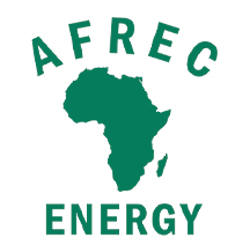
Energy Efficiency
in Buildings Program

Energy-efficient buildings are those which consume less energy while maintaining or even improving the comfort conditions for their occupants compared to standard buildings. Energy-efficient buildings result not only in less environmental impact but are also economically sustainable and resilient.
The ECOWAS Member States are facing an acute shortage of affordable housing, with the region’s population projected to double by 2050, and the fastest urbanization rate in the world. Climate change is providing harsher boundary conditions, posing strong challenges both to the traditional, climate-aware, construction traditions and to the new models sometimes inspired by western development. Such development took place under perceived abundance and low cost of energy, materials, and environmental “space”, conditions that are rapidly vanishing. With a growing need for comfortable and affordable building space and new environmental conscious objectives, there is renewed interest and potential in bioclimatic principles and the use of bio- or geo-sourced local building materials in the Member States.
The ECOWAS Directive on Energy Efficiency in Buildings requires action from national governments to promote the improvement of energy efficiency of buildings. It is estimated that in the ECOWAS Member States 25% to 30% of the total electricity supply is consumed in the building sector, namely cooling and hot water heating. By 2030, about 50% of all public buildings and 25% of all hotels and agro-food industries with hot water requirements are expected to be equipped with solar thermal systems. It is also anticipated that member states will develop and adopt region-wide efficiency standards for buildings.

The main goal is to achieve a demand reduction that can ameliorate the effects of urban development and poor grid infrastructure. Specific objectives are:
- Development and implementation of ECOWAS Building Energy Efficiency Code (EBEEC)
- Development and implementation of and implementation of Energy Performance Certification
- Avoid energy consumption by means of building design: correct building orientation; shading of window and walls.
- Reduce energy consumption: use more efficient technologies that provides the same service with less energy consumption.
- Substitute electricity from fossil fuels to renewables.
- Use electricity only where it is necessary: replace electric water heaters with solar water heaters

Completed
- ECOWAS Building Energy Efficiency Guidelines approved
- Minimum requirements for new buildings energy performance.
- Minimum requirements for existing buildings energy performance subject to major renovation and requiring project approval.
- Minimum requirements for renewable energy sources used in new and existing buildings subject to major renovation and requiring project approval.
- Definition of buildings energy certification;
- ECOWAS framework implementation on energy efficiency for buildings.
- Classification of ECOWAS member states into different climatic zones.
Ongoing
- Support the implementation of the ECOWAS building energy efficiency guidelines in member states.
- Introduction of energy management in building.
- Phasing out inefficient lights and appliances in buildings
Under Preparation
- Project document for the development of ECOWAS Building Energy Efficiency Code
- Development of Energy Performance Certification
- With the support of ECREEE, Member States undertake actions to develop harmonized Monitoring and Verification Systems in the framework set by ECOWAS on energy efficiency in buildings.
- Implementation of the Ecowas Energy Efficiency Product registration database

- Bioclimatic architectural design to reduce energy demand. Bioclimatic design refers to architectural building design that seeks to optimize the local climate and achieve.
- Planning energy-efficient mechanical systems based on low demand: Alongside bioclimatic measures, active systems such as air conditioning may be required to guarantee the comfort of occupants. To be resource-efficient, energy-efficient systems and appliances are adopted where required.
- Covering the remaining energy demand (partly) by renewable energies: Once demand has been reduced by passive design and the necessary mechanical systems have been designed and selected to optimize their performance and efficiency, then renewable energy generation can add even more building performance.
- Design livable buildings: creating living spaces designed for the comfort and health of the occupant. Certain standards of the interior building environment are key to ensuring a comfortable space.
- Resilient buildings: Resilience is described as the capacity to function and thrive no matter the shocks and stresses encountered. Resilience focuses on enhancing the performance of a system in the face of multiple hazards, rather than preventing or mitigating the loss of assets due to specific events; and
- Economically viable and affordable housing: Energy-efficient measures in member states need to be affordable, especially for housing projects. Typically, energy-efficient buildings have a higher capital cost than conventional buildings because of the higher quality building materials and systems as well as the bespoke design. On the other hand, operating costs are lower than conventional buildings because of the passive and energy-efficient systems.

Related News
ECREEE Conducts Second Regional Certification Exam for Solar PV Technicians in Nigeria
Nigeria, 28 November 2025 – The ECOWAS Centre for Renewable Energy and Energy Efficiency (ECREEE) successfully conducted the second edition...
Africa Energy Efficiency Policy Training Week 2025
The International Energy Agency (IEA) and the Ministry of Energy and Green Transition of Ghana are pleased to co-host the next Africa Energy Efficiency Policy...
Official opening of the regional workshop on energy efficiency initiatives and sustainable energy data collection
Cotonou, June 24, 2024 – The official opening of the regional workshop on “Energy Efficiency Initiatives and Sustainable Energy Data...
ECREEE PARTICIPATES IN 6TH MEETING OF THE GN-SEC AND THE IVECF
ECREEE represented by Mr. Hyacinth ELAYO, Sustainable Energy Policy Officer, participated at the 6th meeting of the Global Network of...
ECREEE Clocks Twelve with Excellent Improvements in the Sustainable Energy Sector
ECREEE – Praia, – 6th July 2022 – ECOWAS Centre for Renewal Energy and Energy Efficiency (ECREEE) celebrates twelve years of excellent...









